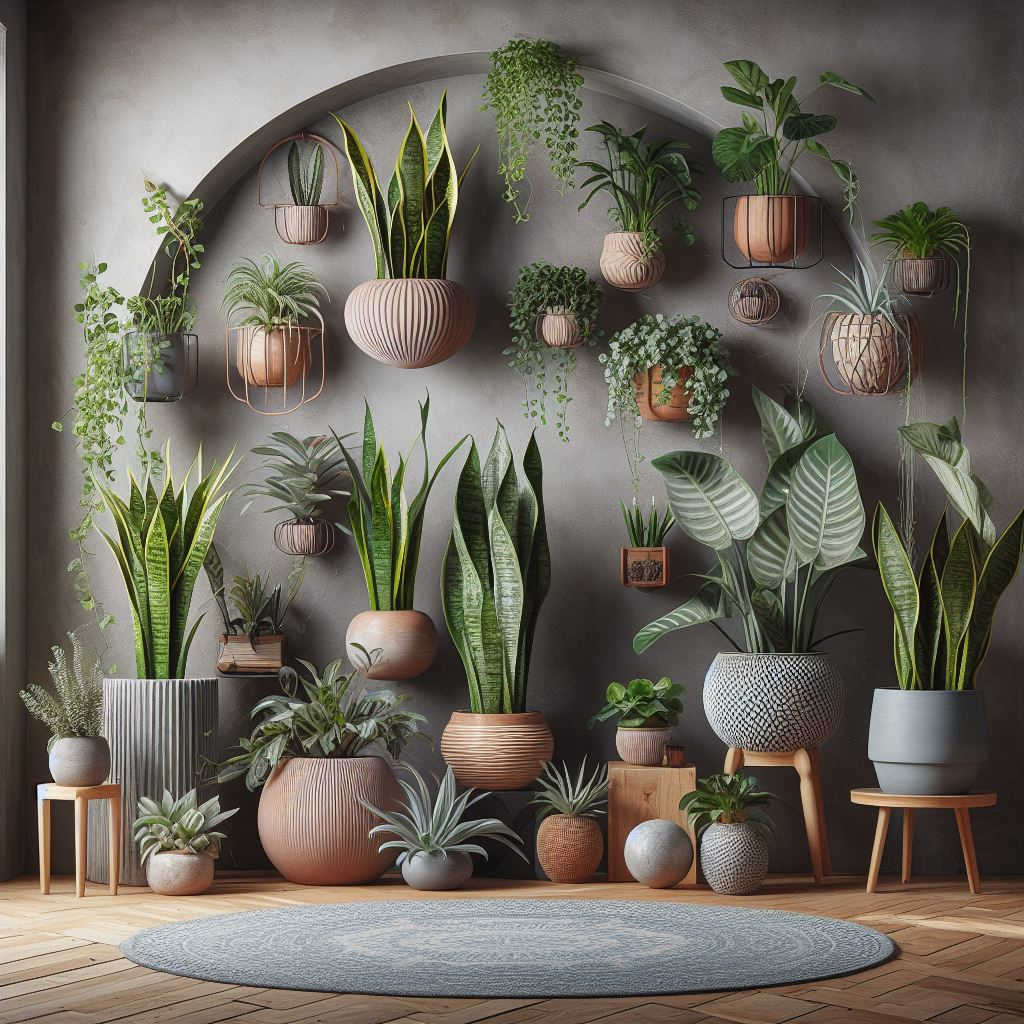City Slicker’s Guide: Low-Maintenance Houseplants for a Thriving LA Jungle

Los Angeles: land of sunshine, endless possibilities, and… notorious plant killers? Fear not, urban jungle enthusiasts! Even with hectic schedules and fickle weather, Angelenos can cultivate thriving indoor oases. The secret lies in choosing the right low-maintenance houseplants, those botanical buddies that shrug off missed waterings and bask in the city’s dappled light. So, ditch the brown thumb stigma and embrace the vibrant world of indoor greenery!
5 Low-Maintenance Houseplants for Your LA Abode:
- Snake Plant (Sansevieria): This architectural wonder thrives on benign neglect. Its upright, sword-like leaves tolerate infrequent watering and low light, making it ideal for west-facing windows and forgetful plant parents. Plus, it purifies the air, removing toxins like formaldehyde – a bonus for city dwellers.
Light: Adaptable, tolerates low light but thrives in bright, indirect light. Avoid direct sun, which can scorch leaves.
Water: Infrequent watering is key! Allow the soil to dry completely between waterings. Overwatering is the enemy.
Soil: Opt for well-draining cactus mix or succulent soil. A terracotta pot with drainage holes helps prevent waterlogging.
Tips: Snake plants rarely need repotting. Divide pups in spring to propagate. Wipe leaves occasionally with a damp cloth. Brown leaf tips may indicate overwatering. - ZZ Plant (Zamioculcas Zamiifolia): Nicknamed the “eternity plant” for good reason, the ZZ plant is practically indestructible. Its glossy, emerald fronds add a touch of sophistication to any corner, while its drought tolerance makes it perfect for busy Angelenos. Place it in bright, indirect light and water only when the soil feels dry to the touch.
Light: Prefers bright, indirect light but tolerates lower light conditions. Avoid direct sun, especially during midday.
Water: Drought-tolerant! Water only when the soil is completely dry to the touch, even allowing it to dry out slightly before watering again.
Soil: Well-draining potting mix is essential. Add perlite or sand for improved drainage.
Tips: Slow-growing, so don’t expect rapid leaps. Repot every 2-3 years. Brown leaves can indicate underwatering. Rotate the pot occasionally for even growth - String of Pearls (Senecio Rowleyanus): This cascading succulent is a visual delight, its delicate, pearl-like beads cascading gracefully from hanging baskets or shelves. It thrives in bright, indirect light and needs watering only when the soil is completely dry. Bonus points for its air-purifying properties!
Light: Bright, indirect light is ideal. Too little light can cause leggy growth, while too much sun can burn the delicate leaves.
Water: Let the soil dry out completely between waterings. Overwatering can lead to root rot. Err on the side of underwatering.
Soil: Cactus mix or succulent soil with good drainage is crucial. Avoid heavy, water-retaining soils.
Tips: Trail tends to grow long, so prune and propagate to maintain desired shape. Mist occasionally to increase humidity. Be gentle with the delicate foliage - Burro’s Tail (Sedum Morganianum): This playful succulent features plump, jellybean-shaped leaves in shades of jade and blue-green. It’s a sun-lover, thriving in south-facing windows, and needs minimal watering – perfect for those weekend warriors who brunch more than they water.
Light: Sun worshiper! Place it in a south-facing window for optimal growth and vibrant color. Avoid prolonged shade.
Water: Less is more! Allow the soil to dry out completely between waterings, especially during winter months. Overwatering can cause stem rot.
Soil: Well-draining cactus mix or succulent soil is essential. Add perlite or gravel for extra drainage.
Tips: Prune back leggy stems to encourage bushier growth. Repot every 2-3 years in a slightly larger pot. Watch out for mealybugs, which can be treated with neem oil. - Spider Plant (Chlorophytum comosum): This classic houseplant is a true survivor. Its grassy foliage adds a touch of life to any room, and it readily produces baby spiderettes that can be propagated for friends or to fill your own urban jungle. Spider plants tolerate a range of light conditions and require watering only when the top inch of soil feels dry.
Light: Adaptable to various light conditions, but thrives in bright, indirect light. Can tolerate low light but may grow slower.
Water: Allow the top inch of soil to dry before watering. Avoid overwatering, which can lead to root rot.
Soil: Well-draining potting mix is key. Adding perlite or sand helps prevent waterlogging.
Tips: Propagate easily! Simply detach baby spiderettes and plant them in their own pots. Mist occasionally to increase humidity, especially in dry climates.
Bonus Tips for all plants:
- Fertilize sparingly, if at all. Overfertilization can damage sensitive roots.
- Use a moisture meter to avoid guesswork when watering.
- Rotate pots occasionally for even growth.
- Dust leaves with a damp cloth to maintain their shine.
- Enjoy your low-maintenance jungle!
With a little love and these handy tips, you’ll be well on your way to creating a thriving indoor oasis, no matter your schedule or sunlight situation. So, embrace the urban jungle trend, choose your low-maintenance plant pals, and let the good vibes (and fresh oxygen) flow!

